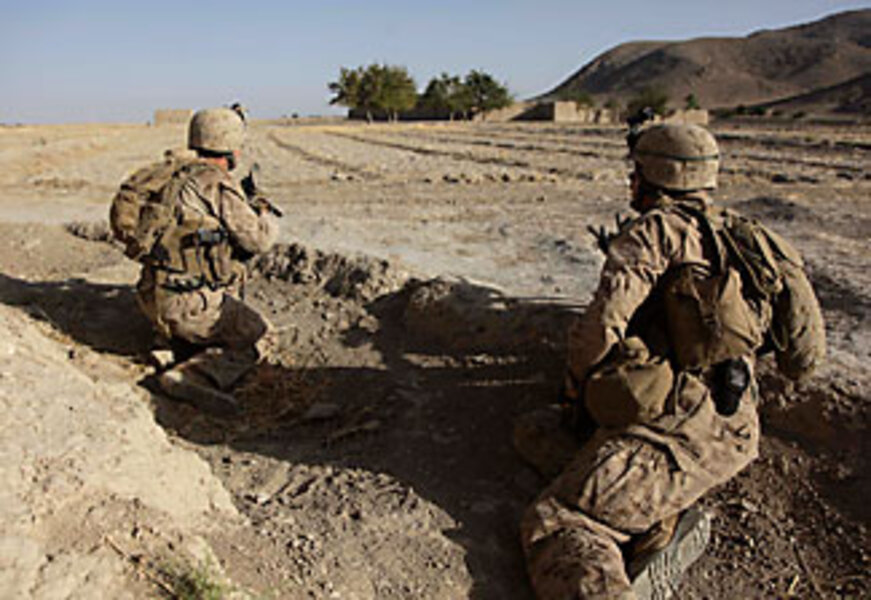US commander: Afghan situation 'serious' but winnable
| Washington
Protect the population, and get local.
That is the shorthand of what is likely to be the "revised strategy" the commander of the 103,000 US and NATO troops fighting Taliban militants in Afghanistan is seeking, elements of which have already begun to be implemented in the past few months.
US Army Gen. Stanley McChrystal submitted his much-anticipated Afghanistan review to the Pentagon and to NATO headquarters in Brussels Monday. In a brief public statement, he acknowledged that things have gone badly and that the situation in Afghanistan is now "serious," but concluded the war can still be won with a new strategy – and with renewed "commitment and resolve."
McChrystal's recommendations – which have not been made public – are expected to mirror in some ways the strategy introduced in Iraq in 2007 along with the troop surge. Some of those measures have been introduced since he was named commander in June, including a more robust effort to protect the Afghan population – in effect to win over hearts and minds – and efforts to take back and hold on to areas formerly dominated by the Taliban.
McChrystal is also expected to recommend reduced focus on the central government in Kabul in favor of closer relationships with Afghan tribes.
More troops
McChrystal's statement suggests he will seek additional US and NATO troop commitments, some military analysts say.
But a request for more resources – not just troops, but civilian development and governance specialists, and stepped up training of Afghan forces – is unlikely to stand alone, analysts add. They say it will probably come with a request that the new military-civilian team in Kabul, headed up by McChrystal and new US ambassador to Afghanistan Karl Eikenberry, be given the authority and time to implement a new strategy.
"What this means is a lot more of what we've been seeing [since McChrystal arrived] – protecting the population and working at the local level rather than focusing on hunting down militants," says Lawrence Korb, a senior fellow in defense issues at the Center for American Progress in Washington.
The thrust of the general's recommendations almost certainly translates into a need for more boots on the ground, says Mr. Korb. "I'd assume he'd like to take it closer to 125,000, with about 100,000 of those being American when all is said and done," he says.
The US currently has about 65,000 soldiers in Afghanistan, more than half of whom have been deployed since President Obama took office in January.
As for funding, Ambassador Eikenberry has indicated that the budget for the civilian side of US operations is about half of what it needs to be – or more than $2 billion a year short.
A winnable strategy?
Some military analysts say McChrystal's review is not so much about a new strategy as it is about getting the war in Afghanistan the clear and "winnable" strategy it has lacked over eight years.
"This is a war shaped not by strategy but by years of neglect and systematic under-resourcing," says Anthony Cordesman, a military analyst at the Center for Strategic and International Studies in Washington. After completing a fact-finding mission to Afghanistan recently, Mr. Cordesman told reporters that "what should be an integrated civilian-military effort and a focus on winning the war in the field is a dysfunctional, wasteful mess focused on Kabul and crippled by bureaucratic divisions."
Cordesman says the war – which he believes is winnable – is being lost not so much because of a "strong opponent" but because of poor management and a lack of "unity of effort" both on the US side and among the NATO countries.
In his review statement, McChrystal also emphasized a need for "increased unity of effort," so analysts assume he offers proposals for accomplishing that in his report.





